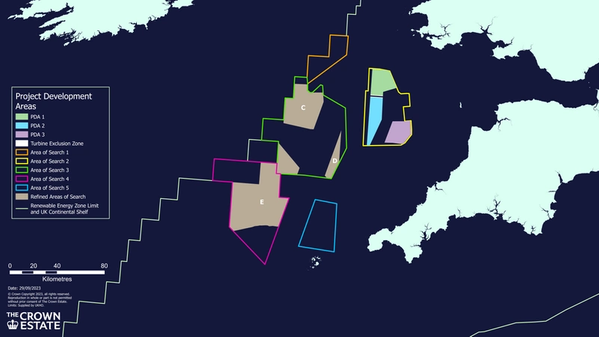
Britain's Crown Estate said on Monday it has amended plans for an offshore wind licensing round which aims to create floating wind technology off the coast of Wales and south-west England to make more capacity available to bidders.
The licensing round next year will be the first phase of development in the Celtic Sea.
The Crown Estate oversees the British monarch's public holdings. It manages the seabed around England, Wales and Northern Ireland and awards seabed rights for the development of offshore wind, wave and tidal energy.
Under the new plans, three project development areas of roughly equal size, each with a potential capacity of up to 1.5 gigawatts (GW), will be made available to bidders, as opposed to the previously proposed four areas of varying sizes.
This means the overall capacity which will be available under the licensing round will be up to 4.5 GW - enough to power more than 4 million homes - compared with 4 GW previously, the Crown Estate said.
"By having fewer, but larger (areas), winning bidders will have greater spatial flexibility to adapt their designs to account for potential issues arising in development," it said in a statement.
An information memorandum is expected to be published before the end of this year ahead of the formal start of the leasing round, it added.
The British government aims to deliver up to 5 GW of floating wind power by 2030.
(Reuters - Reporting by Nina Chestney; Editing by Hugh Lawson)



